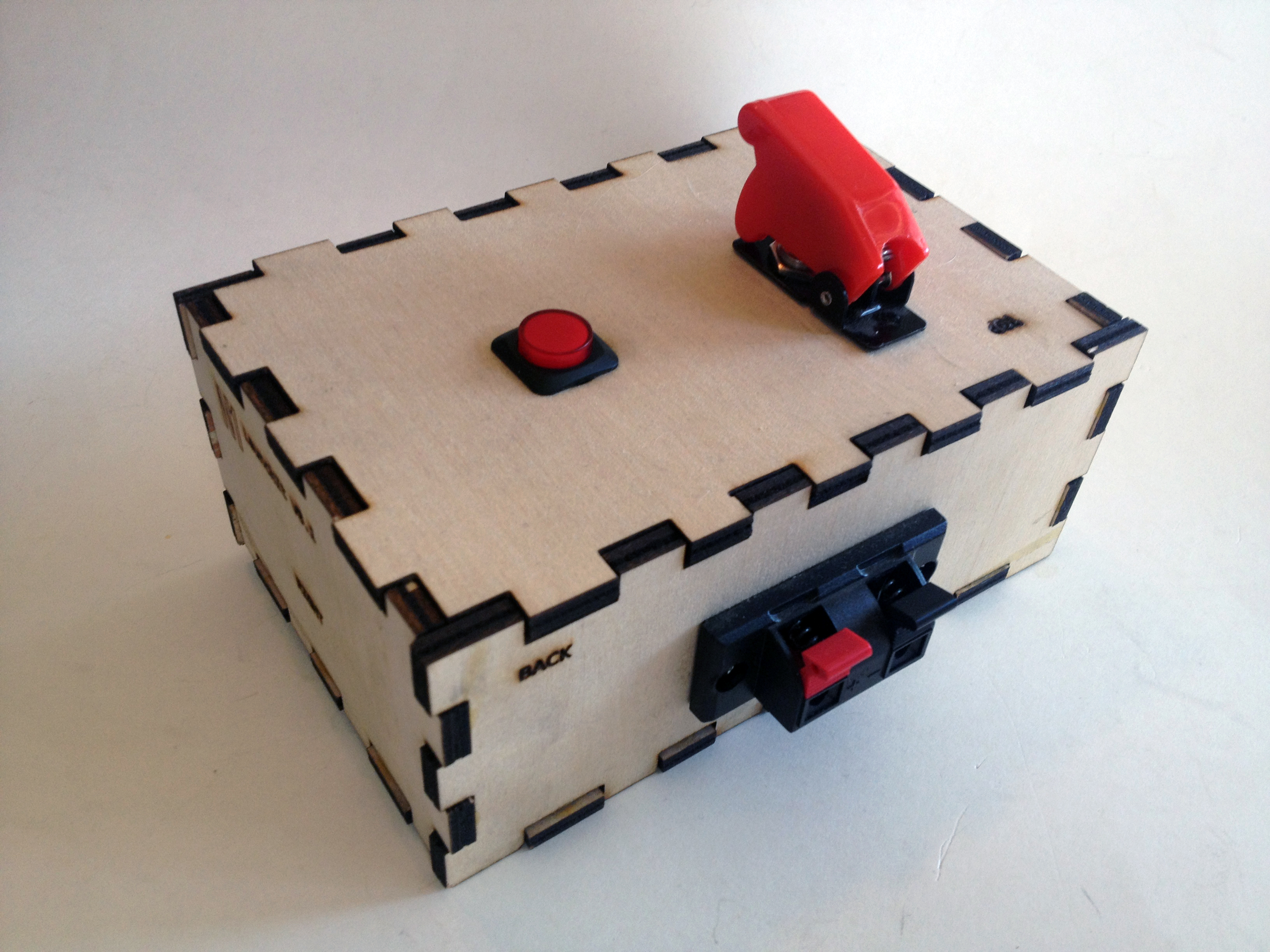The LaunchIt is an inexpensive and customizable model rocket launching system you can make yourself.
Seeing the Mythbusters setting off pyrotechnics and rocket motors with a drill battery and a couple of wires inspired me to create my own launching system. I’ve been interested in the subject since building and launching Estes rockets as a kid.
The LaunchIt consists of a laser-cut wooden box equipped with a battery pack, a safety switch, launch button, warning buzzer, and a transistor to control all of that. When you flick the switch, an LED in the button lights up and the buzzer sounds an alert. The button is now armed, and when you press on it, 6 volts flow through speaker terminals on the back of the LaunchIt, and if you have an ignitor connected to those terminals, your rocket will launch.
You’ll need the following parts to make your LaunchIt:














